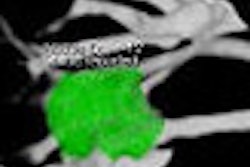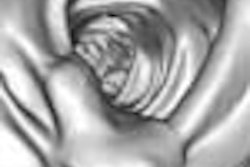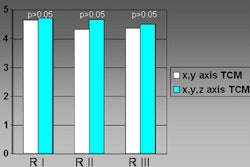Pediatric CT detects tuberculosis (TB) lesions that are not seen on chest x-ray, according to a study from India. Along with China, India accounts for the largest number of TB cases in the world, according to 2001 World Health Organization (WHO) estimates.
The study, which is part of a larger research project to develop a clinical algorithm for TB diagnosis in children, found CT useful in detecting pulmonary lesions for cases in which the radiograph was normal, but the presence of the TB bacteria was detected on gastric lavage cultures.
The research project involved 2,352 children who were suspected of having TB and referred to three hospitals in Chennai, India. The children were between the ages of six months and 12 years. In this group, 201 were confirmed to have TB but 84 had normal chest radiographs. CT was done on nine patients.
"Chest CT was performed in nine of them, seven of whom had normal chest radiographs while two had visible calcification. Eight of the nine children had definitive lesions detected by CT of the chest," the research group wrote in Indian Pediatrics (March 2005, Vol. 42:3, pp. 258-261).
Lead researcher Dr. Soumya Swaminathan from the Tuberculosis Research Center in Chennai told AuntMinnie.com that CT could be performed only in nine patients due to a lack of scanner availability. Her research colleagues are from Tamil Nadu Dr. M.G.R. Medical University and Government Stanley Medical College and Hospital, both also in Chennai.
"While there was no classical or universal feature diagnostic of tuberculosis, the CT scan was able to pick up significant abnormalities not detected by plain radiographs," the authors stated. Among the abnormal CT scans, five were primarily hilar lymph node enlargement and three were pulmonary parenchymal lesions.
The scanner used in the study was a CT-700 (Hitachi Medical Systems America, Twinsburg, OH), according to co-author Dr. K.S. Saravanan from the department of radiology at Government Stanley Medical College and Hospital.
"Only two of the nine children reported here had any abnormality detected on plain radiograph and both these were calcifications," the researchers wrote. The x-rays were reviewed independently by a radiologist and pediatrician who were blinded to the clinical results. They were confirmed as normal by a second reading.
"Physicians need to be aware (that) lesions which cannot be seen on radiograph can be seen on CT. Except that a CT scan can't be a 100% diagnosis," Swaminathan said.
Previous research in the pediatric population also indicates that CT is useful in the early detection of TB. In congenital tuberculosis, CT along with x-ray was able to trace the infection route without surgery or autopsy (American Journal of Roentgenology, January 2004, Vol. 183:1, pp. 253-256).
Although cases among children represent a small percentage of all TB cases, infected children are a reservoir from which many adult cases will arise (Emerging Infectious Diseases, October-December 1995, Vol.1:4, pp. 115-123).
According to the 2001 WHO estimates, six million people develop the active disease every year.
In view of the cost and limited accessibility of CT to a large portion of the population in developing countries, Swaminathan recommended that chest CT for TB should be used primarily in those cases in which the radiograph is normal but there is a strong suspicion of disease.
Diagnosis of TB in the pediatric group is very challenging because cavitation, which is present in pulmonary TB in adults, is rarely found in children. "So there is not enough bacteria to do a sputum test," Swaminathan said.
The tuberculin reaction is the only known method of detecting TB infection, but is known to be falsely negative in various situations such as malnutrition and the presence of severe viral infections, according to the authors. The group also recommended more research into the role of CT in pediatric TB.
By N. Shivapriya
AuntMinnie.com contributing writer
April 21, 2005
Related Reading
Tuberculosis risk high among Indian resident physicians, November 15, 2004
U.K. says tuberculosis has regained upper hand, October 7, 2004
Tuberculosis: Managing an old disease with modern medicine, August 12, 2004
Copyright © 2005 AuntMinnie.com



















